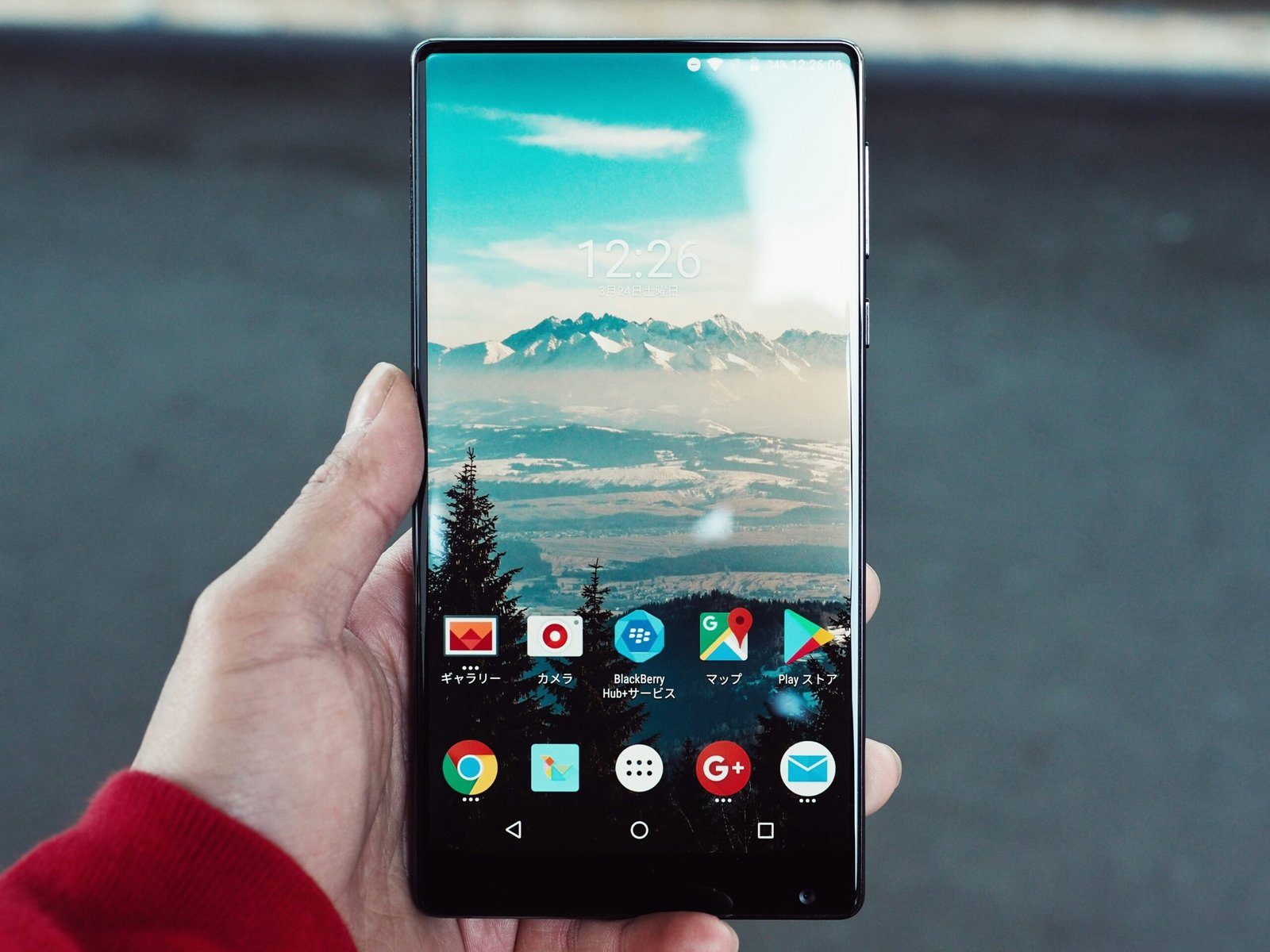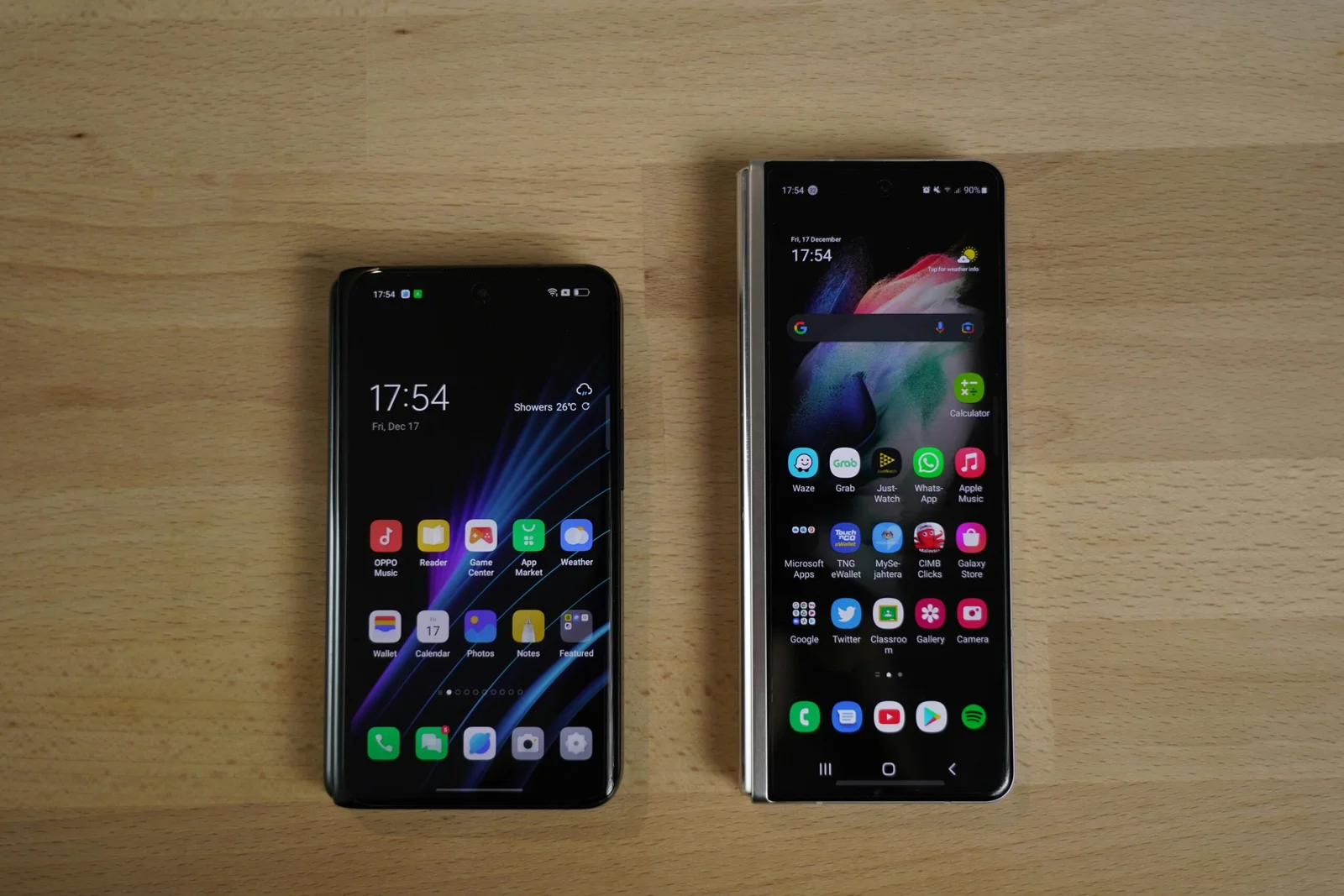
Introduction: The Genesis of Mobile Phones
The inception of mobile phone technology traces back to the mid-20th century, a period characterized by burgeoning innovation in telecommunications. The initial concept of mobile communication emerged during the 1940s, influenced by advancements in radio technology used by military forces during World War II. The first generation of mobile phones, often referred to as 1G, laid the foundation for what would become an essential aspect of modern life.
The journey towards the first successful mobile phone prototype was marked by numerous experiments and milestones. In 1973, Martin Cooper, a researcher and executive at Motorola, made a groundbreaking leap by making the first public mobile phone call using a prototype of the Motorola DynaTAC. This device, albeit bulky and limited in functionality by today’s standards, represented a significant technological breakthrough. Weighing approximately 2.5 pounds and offering 30 minutes of talk time after a 10-hour charge, the DynaTAC was a far cry from the sleek, multifunctional devices we have today.
Pioneering companies such as Motorola and AT&T played pivotal roles in the early development of mobile phones. Motorola’s innovation, spearheaded by Cooper, was complemented by AT&T’s efforts in creating the first cellular network, which became operational in 1978. These early networks were analog-based, providing the basic ability to make and receive calls, albeit with limited coverage and often poor sound quality.
The primitive nature of these first-generation mobile devices was evident in their size, cost, and functionality. Yet, they represented a monumental step forward, setting the stage for the rapid technological advancements that would follow in subsequent decades. The initial concepts and prototypes of mobile phones were instrumental in shaping the trajectory of mobile communication, ultimately leading to the sophisticated, multifunctional smartphones we rely on today.
The 1980s: Analog Era and the Birth of the Cell Phone
The 1980s marked a pivotal era in the evolution of mobile phone technology, characterized by the advent of the first commercially available mobile phones. A hallmark of this decade was the introduction of the Motorola DynaTAC 8000X, launched in 1983. This pioneering device, often referred to as the “brick phone” due to its considerable size and weight, symbolizes the inception of the mobile communications revolution. Weighing approximately 2.5 pounds and standing almost a foot tall, the DynaTAC was far from the sleek, portable devices we are accustomed to today.
Despite their cumbersome nature, these early analog phones were groundbreaking. They operated on the Advanced Mobile Phone System (AMPS), an analog mobile phone system standard developed by Bell Labs. With their introduction, the concept of mobile communication moved from science fiction to reality, enabling users to make voice calls without the constraints of a landline connection. This newfound mobility had a profound impact on business and personal communication, allowing executives to remain accessible while on the move and families to keep in touch regardless of their location.
However, the analog era was not without its limitations and challenges. One significant drawback was the short battery life; the Motorola DynaTAC, for instance, offered only about 30 minutes of talk time and required 10 hours to recharge. Additionally, the coverage area for these early mobile phones was limited. Cell towers were sparse, especially outside urban areas, leading to frequent dropped calls and inconsistent service. Furthermore, the technology was prohibitively expensive—both in terms of the handset cost, which could exceed $3,000, and the service fees, making it accessible primarily to affluent individuals and businesses.
In conclusion, the 1980s laid the foundational groundwork for mobile phone technology, despite the inherent limitations. The introduction of analog cell phones like the Motorola DynaTAC was a significant leap forward, setting the stage for the rapid advancements that would follow in subsequent decades.
The 1990s: Digital Revolution and the Rise of GSM
The 1990s marked a pivotal decade in the evolution of mobile phone technology, characterized by a significant transition from analog to digital communications. This era saw the introduction and widespread adoption of the Global System for Mobile Communications (GSM) standard, which revolutionized mobile communication by providing a more efficient and reliable means of connectivity. GSM’s digital framework allowed for enhanced voice quality, increased call capacity, and improved security features, setting a new benchmark for mobile networks worldwide.
One of the most groundbreaking innovations of this period was the advent of text messaging, or Short Message Service (SMS). First implemented within the GSM framework, SMS allowed users to send brief text messages to one another, fundamentally changing the way people communicated. This new form of communication quickly gained popularity due to its convenience and cost-effectiveness, paving the way for the extensive use of mobile messaging services that we see today.
As digital technology advanced, mobile handsets became more compact, affordable, and user-friendly. The 1990s saw the introduction of several iconic mobile phone models that became symbols of the era. Notable examples include the Nokia 1011, the first mass-produced GSM phone, and the Motorola StarTAC, which was celebrated for its clamshell design and portability. These models not only showcased technological advancements but also made mobile phones more accessible to a wider audience, contributing to the growing global adoption of mobile communication.
The widespread implementation of GSM networks and the increasing affordability of mobile handsets led to a dramatic rise in mobile phone usage across the globe. By the end of the decade, mobile phones had transitioned from luxury items to essential tools for personal and business communication. The 1990s laid the foundation for the modern mobile communications landscape, setting the stage for future innovations and the continued evolution of mobile technology.
The Early 2000s: The Dawn of Smartphones
The early 2000s marked a significant turning point in mobile phone technology, heralding the dawn of the smartphone era. This period saw the introduction of groundbreaking devices that would lay the foundation for the multifaceted mobile experience we know today. Notable among these were the BlackBerry and early Palm smartphones, which combined traditional mobile phone capabilities with new, advanced features such as email and internet access.
The BlackBerry, introduced by Research In Motion (RIM), quickly became synonymous with mobile productivity. Its QWERTY keyboard and secure email capabilities made it an indispensable tool for business professionals. This newfound ability to manage emails and schedules on-the-go significantly enhanced workplace efficiency and communication. Similarly, Palm’s offerings, including the Palm Treo, merged the functionalities of a mobile phone and a personal digital assistant (PDA), offering features such as contact management, calendaring, and basic web browsing.
These early smartphones fundamentally altered how people communicated and managed their daily tasks, setting the stage for the increasingly integrated mobile experiences that would follow. The convenience of having email and internet access at one’s fingertips was revolutionary, enabling users to stay connected and productive while away from their desks.
Concurrent with the rise of these devices was the emergence of mobile operating systems that would underpin their functionality. Symbian, initially developed by Psion and later adopted by brands like Nokia and Sony Ericsson, became one of the first widely-used mobile operating systems. It provided a robust platform for mobile applications and services, enhancing the user experience. Likewise, Microsoft’s Windows Mobile offered a familiar interface for users accustomed to the Windows operating system on their desktops, further bridging the gap between mobile and traditional computing.
The innovations of the early 2000s set the stage for the rapid evolution of mobile technology, establishing a foundation upon which future advancements would build. These pioneering devices and operating systems not only expanded the capabilities of mobile phones but also redefined user expectations, driving the relentless march toward the sophisticated smartphones of today.
The Late 2000s: The iPhone Revolution and Android Emergence
The late 2000s marked a pivotal era in mobile phone technology, highlighted by the launch of the first iPhone in 2007. Apple’s introduction of the iPhone not only revolutionized the mobile phone industry but also redefined user expectations and experiences. The iPhone’s sleek design, capacitive touchscreen, and intuitive user interface set it apart from existing mobile phones, which largely relied on physical keyboards and styluses.
One of the most groundbreaking aspects of the iPhone was its app ecosystem. The App Store, launched in 2008, allowed third-party developers to create applications that users could download directly to their devices. This fostered a thriving developer community and led to the creation of millions of apps, ranging from productivity tools to games, thereby expanding the functionality of smartphones beyond traditional uses. The design philosophy of the iPhone emphasized simplicity, ease of use, and a seamless integration of hardware and software, which became the gold standard in the industry.
In response to the iPhone’s success, Google introduced the Android operating system, with the first Android-powered device, the HTC Dream (also known as the T-Mobile G1), hitting the market in 2008. Android’s open-source nature attracted a wide range of manufacturers, leading to rapid adoption and diversification of devices. The competition between Apple’s iOS and Google’s Android OS spurred innovation and accelerated the development of mobile technologies. Features such as multi-touch capabilities, high-resolution displays, and advanced mobile internet experiences became standard as a result.
The rivalry between iPhone and Android defined the late 2000s and set the stage for the modern smartphone era. This period saw a shift from basic mobile communication devices to sophisticated, multi-functional smartphones that are integral to contemporary digital life. The transformative impact of the iPhone and the emergence of Android laid the foundation for the mobile-centric world we live in today.
The 2010s: The Era of Mobile Apps and Connectivity
The 2010s marked a transformative period in mobile phone technology, primarily driven by the explosive growth of mobile apps and enhanced connectivity. This decade witnessed the rise of app stores, which became central hubs for software distribution, revolutionizing how users interacted with their devices. The Apple App Store and Google Play Store emerged as dominant platforms, offering millions of applications tailored to various needs, from productivity tools to entertainment and communication.
Social media apps played a pivotal role in shaping this era, with platforms like Facebook, Instagram, Twitter, and Snapchat becoming integral to daily communication and content sharing. These applications not only changed social interactions but also influenced marketing strategies and news dissemination. The integration of mobile phones into everyday life extended beyond communication, as apps for navigation, health monitoring, and even home automation became commonplace.
Technological advancements in connectivity were equally significant. The widespread adoption of 4G LTE technology provided faster internet speeds and improved reliability, enabling seamless streaming, video calls, and real-time gaming. This enhanced connectivity paved the way for innovations such as mobile payment systems, with services like Apple Pay, Google Wallet, and Samsung Pay making financial transactions more convenient and secure.
As mobile phones became more embedded in personal and professional spheres, the importance of security and privacy surged. The 2010s saw a heightened focus on protecting user data, with features like biometric authentication (fingerprint and facial recognition) becoming standard. Companies also implemented robust encryption technologies to safeguard against cyber threats, reflecting the growing awareness and demand for mobile security.
Overall, the 2010s were characterized by the convergence of mobile technology and daily life, fueled by the proliferation of apps and enhanced connectivity. These developments not only reshaped individual behaviors but also set the stage for future innovations in the mobile landscape.
The 2020s: 5G and the Future of Mobile Technology
The 2020s have ushered in an era of unprecedented advancements in mobile technology, with 5G networks at the forefront. The rollout of 5G is transforming the landscape of mobile communications by offering significantly higher speeds, lower latency, and greater capacity compared to its predecessors. This leap in network capability is not just about faster download speeds; it also enables real-time applications and supports a multitude of connected devices, paving the way for innovations in various sectors.
One of the most noticeable impacts of 5G technology is its potential to revolutionize industries through enhanced mobile connectivity. For instance, in healthcare, 5G facilitates telemedicine with high-definition video consultations and remote surgeries. In the realm of entertainment, it supports seamless streaming of 4K and 8K videos and immersive gaming experiences. The low latency characteristic of 5G is also crucial for autonomous vehicles and smart city infrastructures, where split-second data processing and response are vital.
In parallel with the proliferation of 5G, we are witnessing significant advancements in mobile hardware and software. Foldable phones have emerged as a notable trend, offering users a blend of portability and expanded screen real estate. These devices promise to redefine user experiences by merging the functionalities of smartphones and tablets into a single, versatile device. Additionally, mobile AI continues to make strides, enhancing functionalities such as voice recognition, photography, and personalized user experiences.
Another area of burgeoning growth is the integration of augmented reality (AR) and virtual reality (VR) into mobile platforms. These technologies are finding practical applications in fields ranging from education and training to retail and entertainment. The enhanced capabilities of 5G networks are instrumental in delivering these AR and VR experiences with greater realism and interactivity.
Looking ahead, the future of mobile technology holds immense promise. We can anticipate further innovations such as more advanced AI-driven applications, enhanced biometric security features, and the continued convergence of mobile devices with other technologies. As 5G networks become more widespread, the stage is set for a new wave of mobile innovations that will shape the way we interact with the world around us.
Conclusion: Reflecting on the Journey and Looking Ahead
The journey of mobile phone technology has been nothing short of extraordinary. From the rudimentary devices of the early 1980s, which were primarily used for voice communication, to the sophisticated smartphones of today that serve as multifaceted tools for communication, business, entertainment, and more—mobile phones have fundamentally transformed our lives. The blog post has meticulously chronicled the evolution of mobile phone technology, highlighting key milestones such as the transition from analog to digital networks, the advent of text messaging, the introduction of mobile internet, and the revolutionary emergence of smartphones.
Mobile phones have not only reshaped personal communication but also revolutionized various industries. Businesses have leveraged mobile technology to enhance productivity, streamline operations, and reach global markets with unprecedented ease. The rapid advancements in mobile applications have fostered innovative solutions in sectors such as healthcare, education, finance, and transportation, making services more accessible and efficient.
As we reflect on the past, it is imperative to acknowledge the transformative impact mobile phones have had on our daily lives. They have become indispensable tools, enabling us to stay connected with loved ones, access information instantly, and perform tasks on the go. The integration of advanced technologies like artificial intelligence, augmented reality, and 5G connectivity promises to further elevate the capabilities of mobile devices, opening new avenues for innovation and enhancing user experiences.
Looking ahead, the future of mobile technology holds immense potential. As we stand on the cusp of new advancements, it is crucial to stay informed and curious about the upcoming innovations that will continue to shape our world. The relentless pace of technological progress assures that mobile phones will keep evolving, offering even more sophisticated functionalities and transforming the way we live, work, and communicate.






